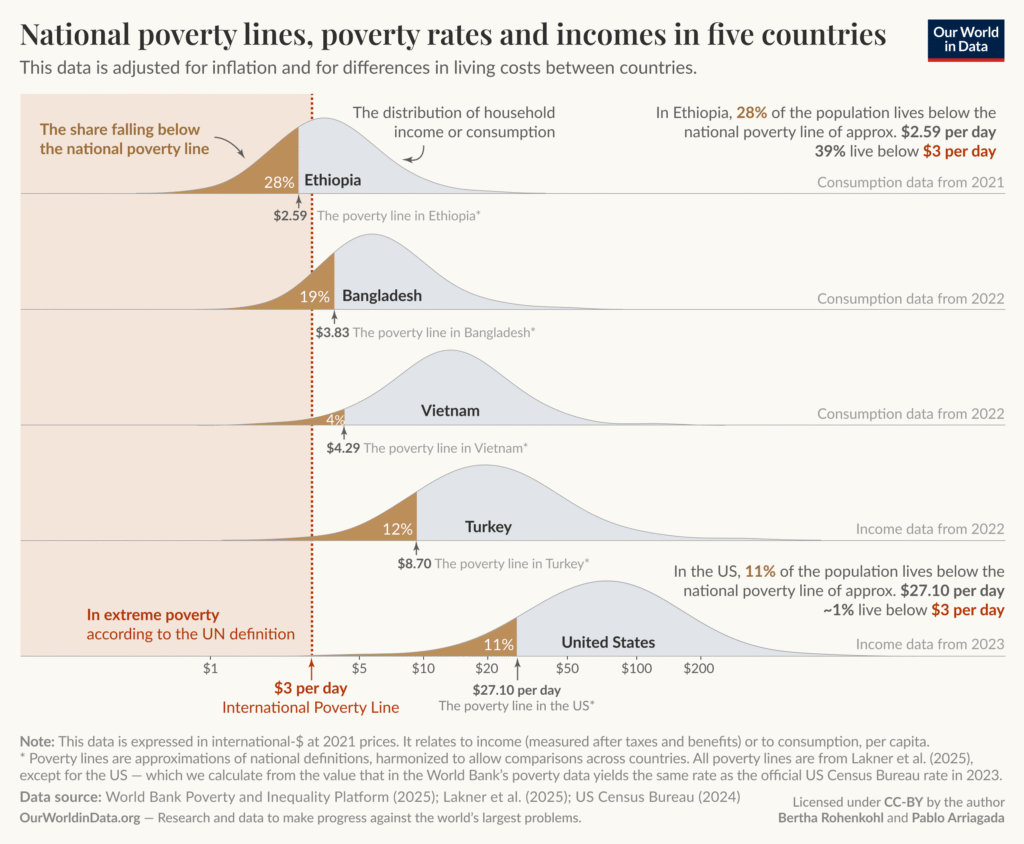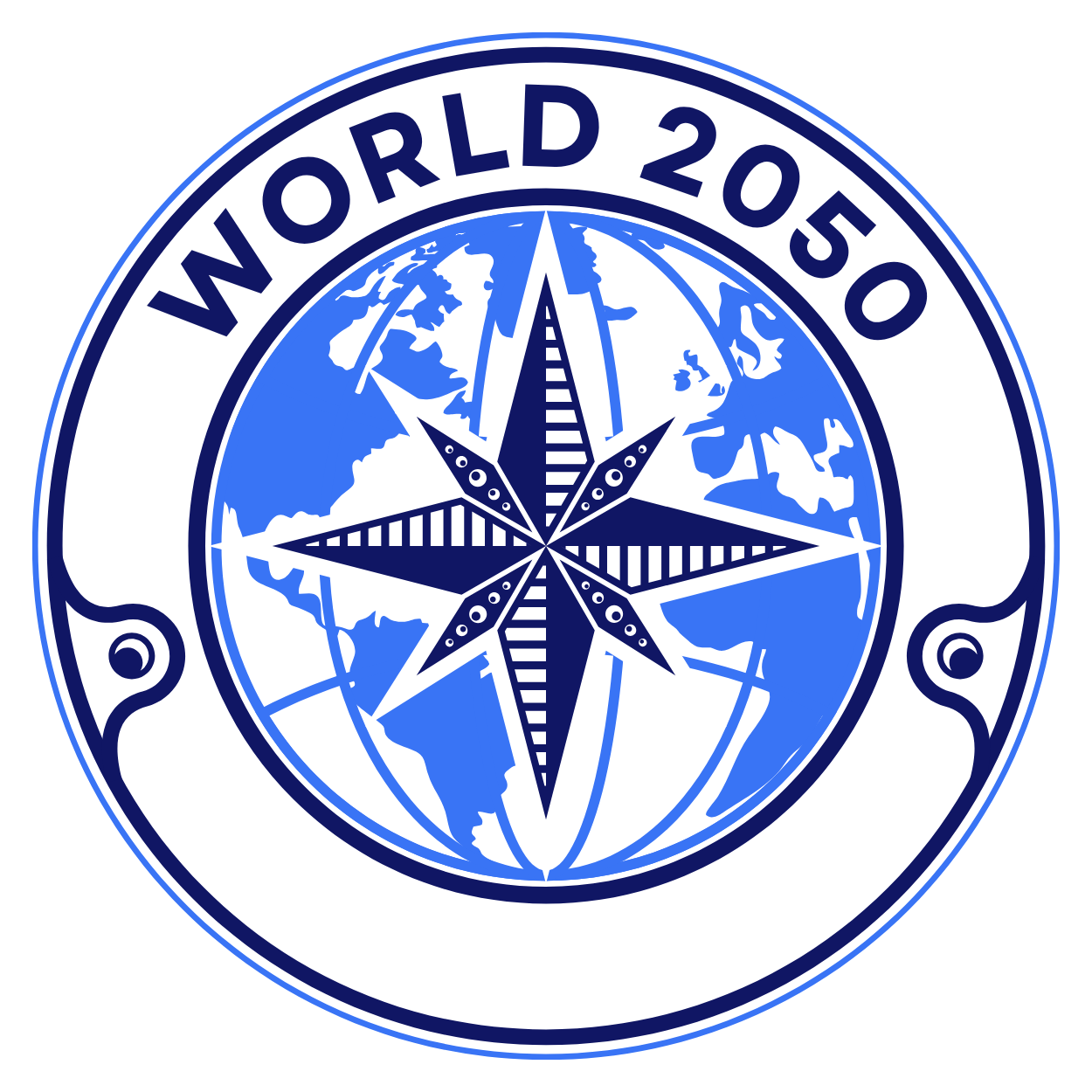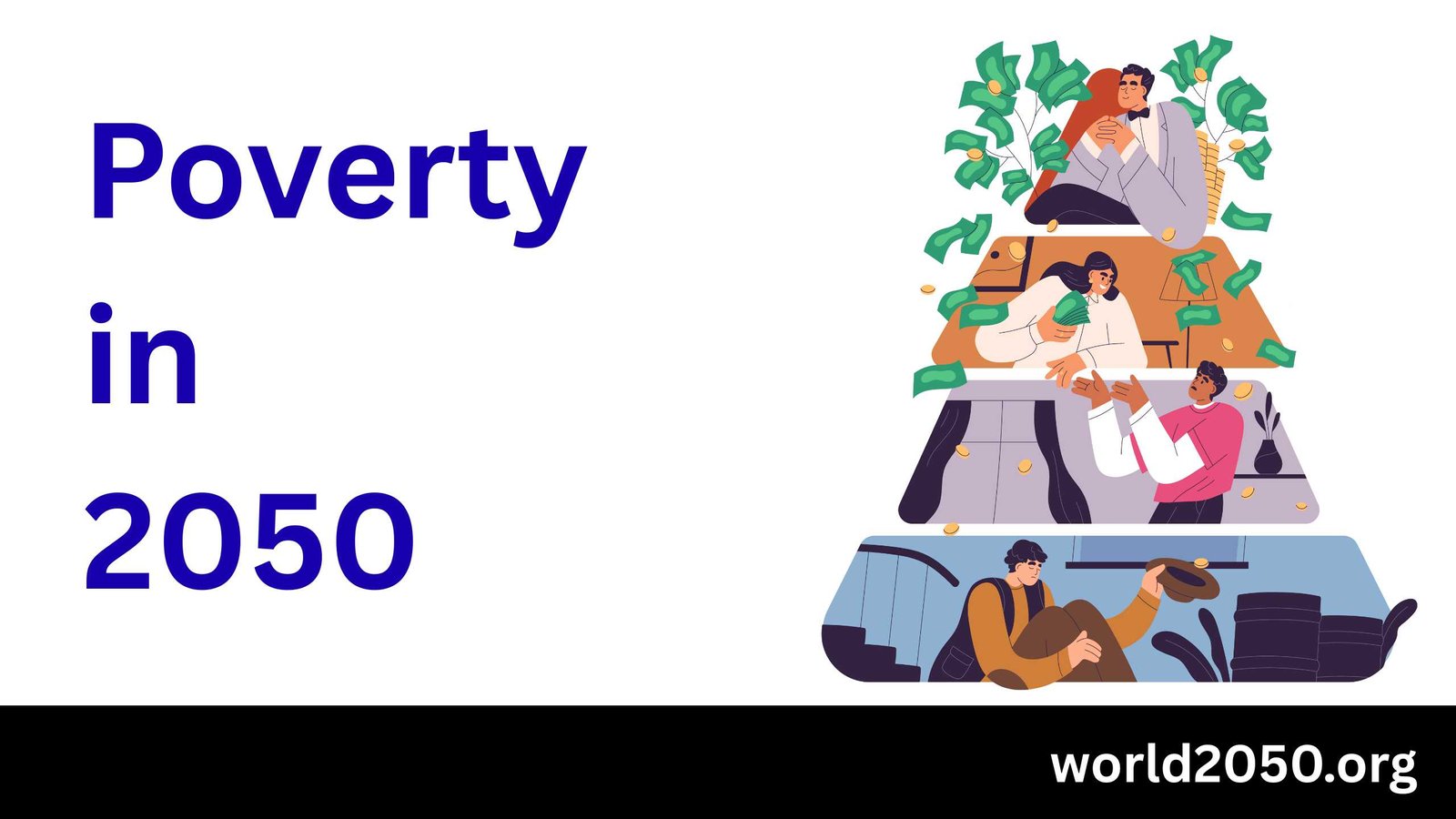Poverty can be defined as a person’s inability to sustain their life on an income below a certain threshold. This threshold can vary depending on different types of poverty, such as extreme poverty and situational poverty.
By 2050, we expect the end of extreme poverty, as defined by current standards ($2.15), from the current 8.5% rate. However, the redefinition of extreme poverty by developed economy standards will again classify around
In this article, World 2050 will focus on understanding extreme poverty and whether it will still exist in 2050.
Table of Contents
Current Situation of Global Poverty
Currently, extreme poverty is defined as a daily income of less than $2.15. According to World Bank Data (IBRD), at least 700 million, or 8.5%, of the world’s population lives in extreme poverty.

This figure rises to 44% of the world’s population (3.5 billion people) if we define extreme poverty by developed economy standards, where a person earns below $6.85 per day.
The reduction in extreme poverty remains a critical challenge due to past setbacks, including the COVID-19 pandemic, local conflicts, supply chain issues, food supply disruptions, and climatic reasons.
As of 2025, the total number of people living in extreme poverty has remained unchanged since the 1990s, primarily due to population growth. However, the percentage of people has decreased significantly from 36% (below $1.90) to 8.5% in 2025.
Threshold of Extreme Poverty in 2050
Currently, extreme poverty is defined as a per capita income of less than $2.15 per day. For developed economies, this is $6.85 due to higher living costs.
By 2050, most large countries will be either developed economies or very close to achieving developed status (with some exceptions). Therefore, we need to apply the current extreme poverty threshold for developed economies ($6.85) to 2050, taking into account a fair rate of inflation.
The average inflation rate between 2000 and 2024 is 3.5%. Assuming this rate continues in the future (till 2050), we see that the value of goods that can be bought for $6.85 today would be around $17. The calculation is shown below.
A=6.85×(1+0.035)26
A=6.85×(1.035)26
A≈6.85×2.466
A≈$16.89
By 2050, the threshold for extreme poverty is projected to be $17, and anyone earning below that amount would be considered extremely poor.
Frequently Asked Questions
What are the main causes of extreme poverty?
Low education, wars, conflict, economic uncertainties, inflation, inadequate development, limited resources, and corruption are among the primary causes of extreme poverty in the current era.
What are the effects of extreme poverty?
Poor mental health, growth in crime, high fatality rates, high infant mortality, high disease vulnerability, and stunted physical growth are some of the effects of extreme poverty.
How can people escape poverty?
To escape poverty, individuals need access to affordable healthcare, housing, education, clean water, healthy food, proper medical care, and career counseling.


